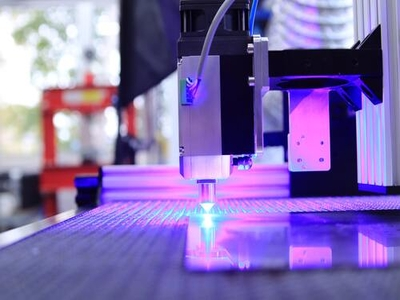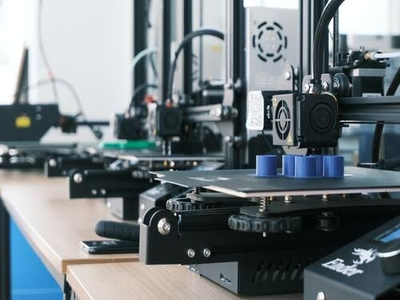3D printers are becoming more and more popular, but how accurate are 3D printers?
Many people believe that they can create anything with a 3D printer, but that is not always the case.
In this blog post, we will discuss the accuracy of 3D printers and how you can achieve the best results.
We will also discuss some of the most common mistakes people make when using 3D printers.
Let’s get started!
3D Print Speed and Why it’s Important

Print speed is how fast the 3D printer can print a layer.
This is important because the faster the print speed, the less time you have to wait for your print.
The average print speed for consumer-grade 3D printers is around 50 mm/s.
However, some high-end industrial printers can reach speeds of up to 200 mm/s.
A good print speed for 3D printers is essential for maintaining high accuracy and precision in printed objects.
Using a Higher Print Speed
A high print speed will ensure that the printer layers are applied quickly, producing sharp corners and smooth surfaces on each object.
This is particularly important for objects like small electronic components or complex machinery, which require extremely precise geometries to operate effectively.
Therefore, it is vital to carefully consider print speed when choosing a 3D printer, as this can significantly impact the quality, functionality, and accuracy of your printed objects.
How Do You Determine the Print Speed?
There are a few ways to determine the print speed of a 3D printer.
The most common method is to check the manufacturer’s specifications.
However, this can be misleading, as the print speed is often listed as the ‘maximum’ or ‘ideal’ speed.
This means that it may not give a true indication of how fast the printer can print.
Key Factors
When determining the print speed of a 3D printer, there are a few key factors to consider:
- One is the port speed of the printer, or how quickly it can draw material through its port to form each layer.
- Another important factor is the type of 3D printer material, as different materials generally require different port speeds to achieve proper consistency and quality.
- Additionally, some printers can also be calibrated differently to tweak their print speed, depending on the specific requirements of the project at hand.
Ultimately, many factors contribute to print speed, and it is important to take them all into account when making this determination.
Experiment With Speeds
Another option is to experiment with different print speeds and compare the results.
You can do this by printing the same object at different speeds and examining how well it turned out.
This approach can be time-consuming, but it will give you a good idea of how different speeds impact the quality of your prints.
Factors that Affect Print Speed

Print speed is an essential factor to consider when choosing a 3D printer, and many factors determine the speed at which a 3D printer can print.
These factors include the travel speed, the size of the build area, and the resolution.
The travel speed determines how fast the print head can move, and the build area determines how much space the printer has to work with.
The resolution, or layer height, also affects print speed because the thinner the layers, the more time it takes to print.
In general, FFF 3D printers are faster than SLA 3D printers, but both printers have different benefits that should be considered when making a purchase.
Want to see a comparison of an FFF versus an SLA printer? Watch the video below!
How Accurate Are 3D Printers?
Ultimately, the best 3D printer for you is the one that can meet your specific needs in terms of speed, accuracy, and features.
So, how accurate are 3D printers?
The accuracy of 3D printers is a hotly debated topic, with opinions varying depending on the specific printer, material, and application in question.
Yet, some general trends can be observed regarding print speed and accuracy.
Print Speed Vs Accuracy
In general, 3D printers are quite accurate. Of course, there are always exceptions to the rule.
There have been instances where 3D-printed objects have not turned out exactly as intended.
However, this is usually due to user error or 3D printer issues.
To sum up, they are quite accurate and can be used to create high-quality objects.
Final Words
So, how accurate are 3D printers?
The answer is that it depends on the printer and the printing material.
However, in general, 3D printers can produce very accurate prints.
As technology advances, we can only expect 3D printers to become more accurate and precise.
Articles You Might Enjoy Reading: